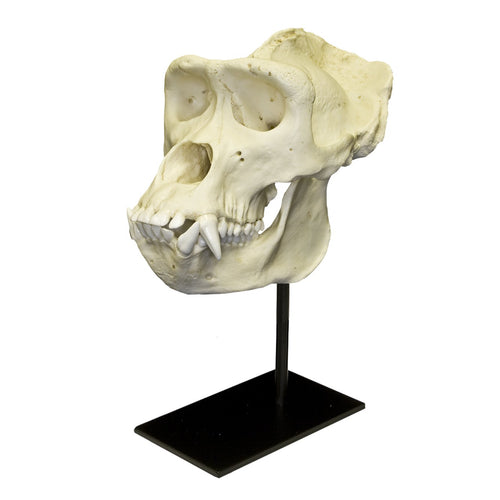

“I don’t know if it’s what you all think it might be… but I cannot explain finding a primate skull in the Pac Northwest without wondering! What do you believe?”Ĭomments ranged from claiming it was a replica gorilla skull cast and clickbait to those saying it was a great find and wanting to learn more about it. “I’m sure these pics will be taken down… as will probably the video by government or state park officials… but the skull is safe,” he said. He added: “The skull was found partially buried underground in deep back forest ravine after a massive storm in the Pac Northwest where clearly a bunch of trees and earth were disturbed. “Absolutely unreal… we thought it was a bear skull when we found it,” he wrote. Speaking about the finding, he said he originally thought it was something else. There are also a number of Museum publications on the Piltdown story.“It’s currently in a secure location awaiting primatologist review.” The Museum also has a large collection of photographs of the original findings and cranial restoration. We hold many documents and photographs relating to the Piltdown Man, including correspondence between Woodward Smith and Dr Oakley and communications within the Museum’s palaeontology department. The conclusion: Piltdown Man was an audacious fake and a sophisticated scientific fraud. They also discovered that most of the finds from the Piltdown site had been artificially stained to match the local gravels. Scratches on the surfaces of the teeth, visible under the microscope, revealed that the teeth had been filed down to make them look human.

Their results showed that the skull and jaw fragments actually came from two different species, a human and an ape, probably an orangutan. This eliminated the possibility of the Piltdown Man being the missing link between humans and apes as at this point in time humans had already developed into their Homo sapiens form.įollowing this, biological anthropologist Dr Joseph Weiner and human anatomist Wilfrid Le Gros Clark, both from Oxford University, worked with Dr Oakley to further test the age of the Piltdown findings. However, in 1949 new dating technology arrived that changed scientific opinion on the age of the remains Using fluorine tests, Dr Kenneth Oakley, a geologist at the Natural History Museum, discovered that the Piltdown remains were only 50,000 years old. For the most part, their story was accepted in good faith. They announced their discovery at a Geological Society meeting in 1912. Smith Woodward made a reconstruction of the skull fragments, and the archaeologists hypothesised that the find indicated evidence of a human ancestor living 500,000 years ago.

They found a set of teeth, a jawbone, more skull fragments and primitive tools, which they suggested belonged to the same individual. He had found part of a human-like skull in Pleistocene gravel beds near Piltdown village in Sussex, England.ĭawson wrote to Arthur Smith Woodward, Keeper of Geology at the Natural History Museum at the time, about his find.ĭawson and Smith Woodward started working together, making further discoveries in the area. In 1912 Charles Dawson, an amateur archaeologist claimed to have discovered the ‘missing link’ between ape and man.


 0 kommentar(er)
0 kommentar(er)
